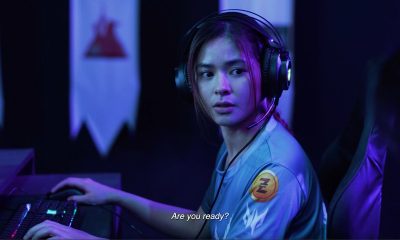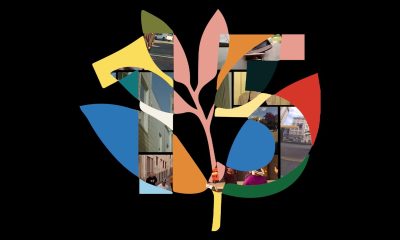Sports
Life's indignities unfold in a darkly engaging 'Dream State'
By Aleyna Rentz / Published April 11, 2025 Before I met Writing Seminars department chair Eric Puchner, who served as my thesis adviser when I was a graduate student in the creative writing MFA program here at Hopkins, I had never heard of cross-country skiing. A southerner, I was already skeptical of anyone who’d willingly […]
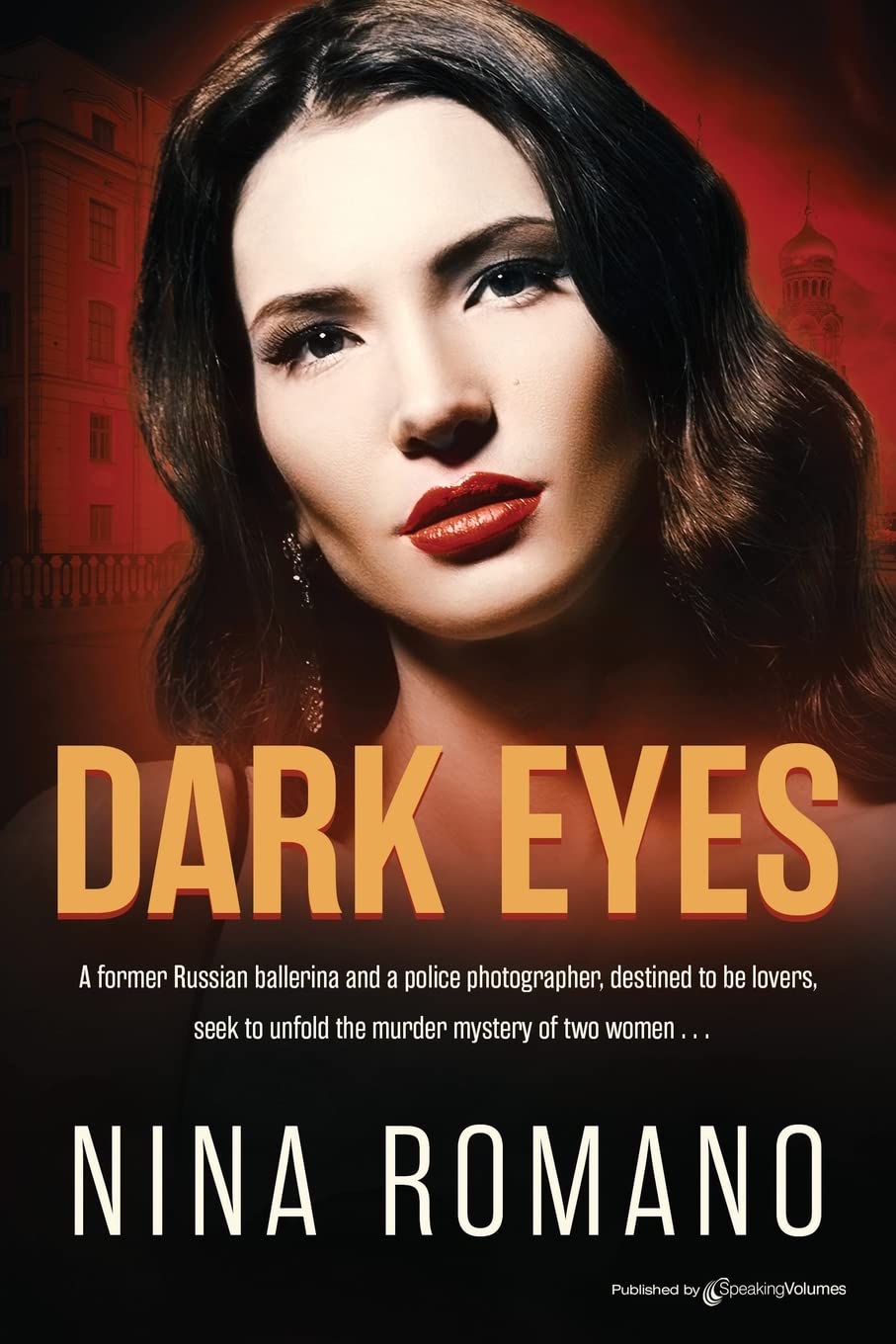

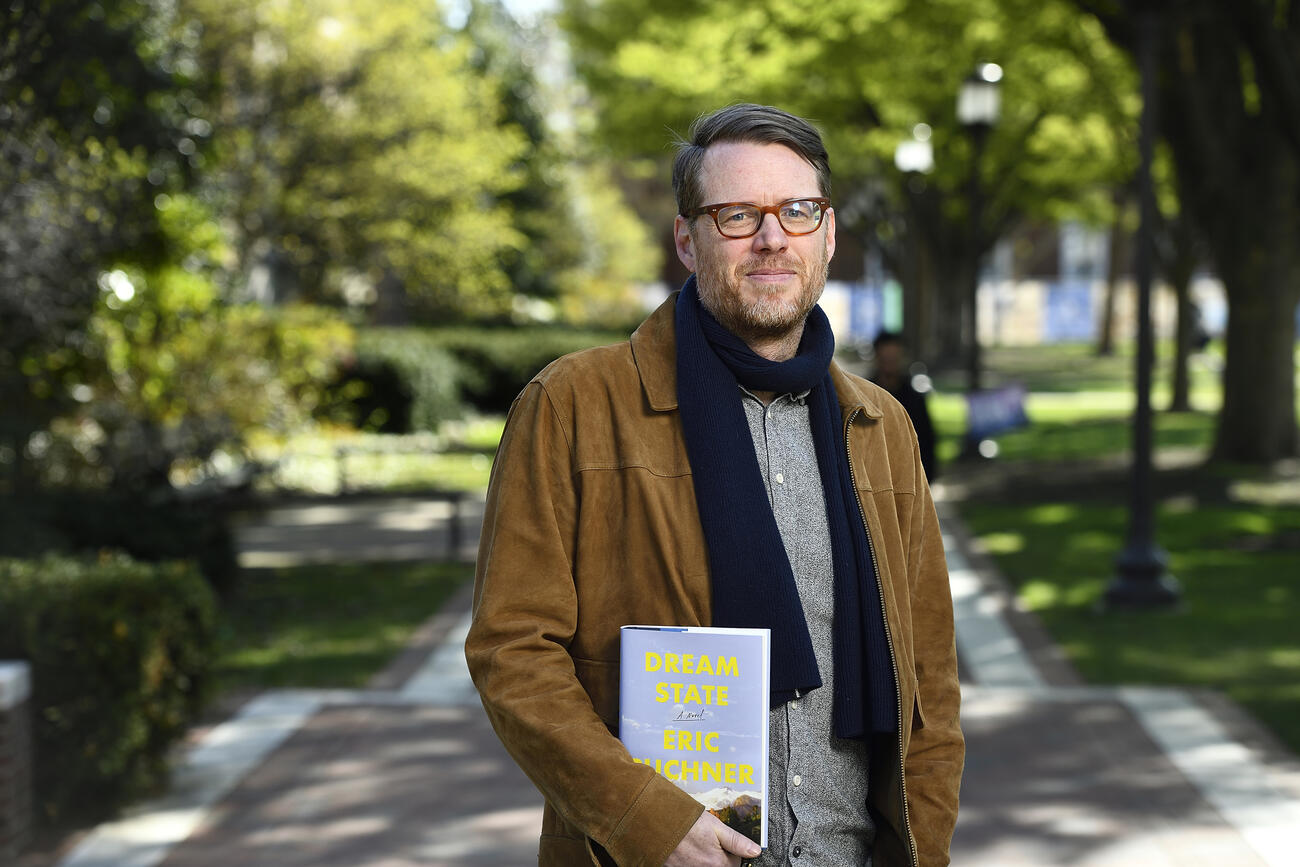
Before I met Writing Seminars department chair Eric Puchner, who served as my thesis adviser when I was a graduate student in the creative writing MFA program here at Hopkins, I had never heard of cross-country skiing. A southerner, I was already skeptical of anyone who’d willingly strap metal bars to their feet and hurl themselves down a mountain, but the idea of trekking across the wilderness with such self-imposed handicaps seemed absurd. I remember Eric insisting it was fun, but his new novel, Dream State, confirmed my suspicions. One of the main characters is haunted by the trauma of losing his best friend in a freak skiing accident that finds him buried in the snow, his body unrecoverable. I was deeply moved by this scene, but also a little vindicated.
Like most of the novels I admire, Dream State is a book laden with tragedy. Eric himself admitted that his critics usually deem his writing “too dark,” and I guess that’s fair. The characters in the novel contend with an array of life’s indignities—the swift and overwhelming onset of dementia, the helplessness of watching a loved one succumb to addiction, the nagging worry that maybe your entire life has been a series of wrong choices and wasted time. Good fiction holds a mirror to life, and in this endeavor, Dream State succeeds. What’s more undignified than being human?
Video credit: The Oprah Podcast
I thoroughly enjoyed the book, and Oprah happens to agree with me. She picked Dream State for inclusion in her famed book club, a cohort of esteemed writers that includes Barbara Kingsolver, Toni Morrison, and Colson Whitehead, to name just a few. Like many of the rest of us, Oprah has moved on from network television and entered the podcast space; she invited Eric onto her revamped show, where she reminded viewers that she, too, is only human. When discussing a part of the novel in which several characters come down with norovirus, a particularly nasty kind of stomach bug, Oprah volunteered her own experiences with the illness.
“Coming out of both ends,” she said. “It’s terrible.”
The novel opens on an idyllic estate in rural Montana, where characters Cece and Charlie find their picture-perfect wedding day thwarted by a norovirus epidemic that leaves half their guests and wedding party with, well, stuff coming out of both ends. Amidst this emotional and gastrointestinal turmoil, Cece ends up falling for, and ultimately marrying, Charlie’s troubled best friend, Garrett, establishing a love triangle that persists across five decades.
Stomach virus aside, perhaps the most demeaning thing the characters experience is the swift passage of time. A news release from Oprah’s website says that “With its focus on change—changing relationships, changing identities, and a changing climate—[Dream State] is a perfect read to carry us through the transition to spring.” I don’t know about that. If you subscribe to T.S. Eliot’s notion that April is the cruelest month, then maybe. Time in the novel is sneaky, furtive; it slips by without the characters—and the readers–noticing it. Characters jump from childhood to teenagedom over the course of paragraphs, while chapters often end in one decade and pick up in another, a disorienting effect that mimics the equally disorienting experience of getting older. That, I think, is the Dream State suggested by the novel’s title: the somnambulance with which the characters move through time, only occasionally jolting awake to realize several years have come and gone.
Several years have come and gone since I was a graduate student. Talk about an undignified experience: To obtain an MFA in creative writing, you must spend two years listening to your classmates and professors tell you everything that’s wrong with your writing. I will never forget the day I met with Eric to discuss the first 50 pages of a novel I’d written in a random burst of inspiration. It was about a failed punk singer turned stay-at-home mom, and in my frenzied hurry to get all my ideas on the page, I’d made a few mistakes (I think I referred to The Ramones as British, for one). Eric folded his hands on his desk, shook his head gravely, and said to me, “Aleyna, you know nothing about punk music.”
Unfortunately, becoming a better writer requires moments of deep mortification, but having Eric as a thesis adviser made the process easier to endure. He was an honest but gracious appraiser of my work who understood the vision I had for my fiction and helped me realize it. Even though reading and writing about his novel somewhat inverted our previous relationship, I still found myself in the position of a student, learning by example what makes a great novel.
In this Q&A, we discuss those craft choices in detail, as well as the question that must confound the naysayers of so-called “dark books”: Why do we read them, let alone like them? I imagine it must be for the same reason people like skiing: Something about the bitter cold and aching muscles and imminent danger leads to a moment of exhilaration. All that struggle and indignity reminds us we’re alive.
How does it feel to be asked so many questions about your writing? I personally don’t like talking about my writing. It feels almost invasive.
I don’t feel it as invasive, but I do feel that my answers are hardening into shtick. I’ve never been in a position where there’s a video out there with one and a half million views with a lot of people hearing me answer the same question. I never really know if someone hasn’t heard me say the same thing or not. And my kids have started to make fun of me for using the same phrases over and over. “The trap door of regret.” My son, Clem, uses it all the time as a joke now.
But the other answer to that question is that, no, I don’t like talking about my writing. Writers don’t like to talk about the process partly because it’s impossible to articulate. And that dreaded question: What is your novel about? It’s about the experience of reading it. That’s the proper answer. It’s about the emotional and aesthetic experience of reading it, which is what all novels are about. It has a lot of themes, but in the end it’s only partly about those themes. So I find that to be an especially tricky question.
Have you heard from any readers that really connected with the novel?
Oh, yeah. It’s been great. I’ve gotten some really lovely emails, a lot of them from people who connected deeply with the book because they’ve experienced similar issues. I’ve heard from a number of people who’ve dealt with parents with dementia and Alzheimer’s, as well as other people with really passionate, lovely reads of the book, which has been really heartening and wonderful to me.
I don’t expect everyone to connect to it. And a number of people haven’t, judging from the reviews on Amazon, and I totally understand that. I don’t connect to every novel that I read, but some people have connected to it really deeply in a way that makes me happy. But to try to explain why somebody connects to it and why somebody doesn’t, it’s just impossible.
You read the Amazon reviews?
I try not to, but it’s been different this time around because it was a New York Times bestseller for two weeks. So I do check in occasionally to see how it’s doing, mostly because I worry that I’m letting my publisher or Oprah down or something. So I have made the mistake of looking at the reviews. And it’s the same thing that everybody has always said about my books, which actually is heartening to me: Some segment of the population really responds to them and loves the characters and isn’t bothered by the “depressing” second half, and then there are a number of readers who just find the characters unlikable. That seems to be the euphemism people use for characters that do things that they wouldn’t do.
Or that they imagine they wouldn’t do.
Imagine. Thank you. Exactly. From my perspective, when a character is flawed in a very human way, certain readers respond to that as the character’s being unlikable. I honestly don’t know what that means anymore. So there’s that criticism, and then there’s a new one, which is that certain questions the characters grapple with aren’t answered, which for me is the whole point of the book, because I wanted to write a novel that was like life, where Cece’s problems in particular—the doubts she has about her life, about the choices she’s made—aren’t answered in any kind of definitive, black-and-white way. And I did that very much on purpose because that’s been my experience of life, that it doesn’t provide neat and tidy answers to our biggest issues and conflicts and questions. But I understand a certain type of reader doesn’t really like that.
I don’t mean to suggest that everyone hates it! A lot of people seem to be moved by it, which is great.
“[Oprah is] a very close reader who pointed out particular sentences in the book and asked about them. They were all sentences that I secretly was proud of, and I was impressed by that.”
And Oprah loved it.
She was great. When she called me at first, I was in that parking lot outside Gilman where you’re not actually supposed to park for more than 10 minutes, and she was performing a little bit because someone was filming her in her kitchen, which I didn’t know at the time. So to hear that sort of classic Oprah voice on the line was very startling to me.
But in person, in the green room, she was really warm and friendly and smart. Only a few critics have mentioned the book’s language—and to me, the sentences are the most important aspect of the book—but she’s a very close reader who pointed out particular sentences in the book and asked about them. They were all sentences that I secretly was proud of, and I was impressed by that.
Between your first novel and this one, you wrote quite a lot of short stories. Was it hard to transition from the short story mindset to the novel mindset?
I think of them as two completely different beasts. People have asked me if I ever sit down to write a story and it turns into a novel. That’s never happened to me. There’s that old adage that a short story has more in common with poetry than the novel. I’m not sure that’s precisely true—poems are quite different from prose—but I do understand what that suggests, which is that short stories require a great deal of economy. When I’m writing a story, I know where all the furniture is. I feel really comfortable writing it. I love writing the endings of short stories because stories traffic in irresolution in a way that I really respond to and like, but many people don’t.
When I sat down to write both my novels, I consciously wanted not to write a short story writer’s novel. And what I mean by that—and some of these books I admire, I’m just not interested in writing them myself—is a novel in which every chapter feels like a short story. I don’t want [chapters] to be discrete entities. I know that the lovely Ron Charles review in The Washington Post talked about how some of my chapters feel like short stories. I didn’t intend them to be that way at all. Maybe there’s a short story gremlin on my shoulder pulling the strings. But I really think of them as two completely different things.
And I’ll say one more thing, which is that I’ve always longed to write that perfect 200-page novel with no fat, where you could shake it and nothing falls out, but I don’t seem to have that gene. When I write novels, I go big. I don’t know why.
Maybe it’s more fun to write that way, to explore all of these different characters and have room to deviate from the plot.
Maybe that’s what it is. I feel so much relief and release when I’m writing a novel because it’s not a short story and I can luxuriate in the form. I love novels that span large swaths of time—in which the antagonist is time. I’m really attracted to that. And with this novel in particular, I tried to capture the sort of emotional experience of time passing. Particularly in the latter half, I wanted the passing of time to surprise both the reader and the characters. That’s why so much is elided. You get to a chapter and 15 years have passed, and the characters have a hard time believing it; they’re as unprepared for it as the reader is.
“When I read a really powerful book in which time is the antagonist, it sends me back into the present moment, and I want to live my life more deeply because I’m in better, more honest touch with my own mortality.”
There was one part of the book that I had to go back and reread, because at one moment, the characters were 8, a few sentences later, they were 13. I’d totally missed that they’d aged, and I thought it was an interesting choice to convey the passage of time so inconspicuously.
Well, that chapter in particular, that’s the Lana and Jasper chapter when they were kids. And I wanted to capture that feeling that you have when you’re, say, at summer camp. Because these are two characters who are meeting once a year for a few days every summer and have become incredibly close. And it’s like this alternate universe, which is its own space time continuum, and the world seems to be going on without them, and yet they’re remaining the same. I wanted to try to capture that particular phenomenon. I had to fight a little bit to keep that as disconcerting as it was. When I sent it out to my usual cohort of readers, old friends of mine, a couple of them suggested using white space to show the transition in time. I think my editor also suggested that, but I was insistent the whole purpose was to be disorienting.
The book ends with the wedding. Why did you decide to skip over it entirely and then put it at the end?
I had just gotten to Yaddo [an artists’ retreat where many celebrated writers have stayed] for a two-week stay, and I’d written about two-thirds of the book but had no idea how to end it. I don’t think I had written the whole wedding scene yet, but I knew what it was. I spent the first week just totally blocked, but then I had that breakthrough like, oh, maybe I should just wait, give a little glimpse of the wedding and then show the full wedding at the end, and present it as if the whole trajectory of Cece’s life was actually the dream. I don’t mean literally, but in the sense that as you get older, life tends to feel more and more dreamlike; it could have gone any number of ways, and you could have had any number of dreams that would’ve constituted your life. I wanted to present this alternative future that might have happened, which would cast this retrospective haziness on what had actually happened. When I came up with that ending, I actually cried. I was so happy I’d figured it out, and people seem to respond to the ending in particular, which is really heartening to me.
Yes, I really liked that the final image of the book is a photograph being taken, which for me reinforced the theme of life’s transience—if time is the antagonist, photography might be an inadequate weapon the characters use against it. I don’t know if you did this on purpose, but I noticed that photography was a motif throughout the book: Lana becomes a documentary filmmaker; Charlie says photography makes beautiful things ugly and ugly things beautiful; the kids use a phone app that manipulates their photos to predict what they’ll look like when they’re old; and then, of course, there’s the final scene. I wondered if that was intentional.
I think that’s really smart. The novel is about life’s evanescence, and yet you have this technology that can freeze life. I don’t know if I had thought about photography as a whole, but in many chapters, there is somebody who’s trying to document and capture and make permanent life’s impermanence. And whether that’s through documentary filmmaking, which is what Lana turns out to do, or whether it’s through that weird app that Lana has, which predicts how you’ll look at a particular age—she’s projecting into the future, trying to imagine all these different future selves. On the one hand, I did that to flatten time and make it seem as if time was two-dimensional, so that every second of our lives is actually happening simultaneously, because that’s the feeling that I wanted to capture in the book. And then at the end, the wedding photographer takes a picture of Cece leaping off the dock—she’s leaping into the future and doesn’t know that she’s going to make the choice that she made. It’s a way of not only rewinding time, but trying to freeze time before everything happens.
You’ve also said you like reading other books where time is the enemy—which books in particular?
So many. It also has to do with the fact that I am kind of in love with books that are about houses, which either age or don’t age along with the characters: Housekeeping by Marilyn Robinson, To The Lighthouse by Virgina Woolf, Light Years by James Salter.
There’s this idea that we create a house because we want a permanent place on earth, and then we go on to experience the fact that we’re completely impermanent; that juxtaposition, the poignancy of our failure to create a permanent home on Earth, is what I love about those books. The house becomes emblematic of that, and the house either survives or doesn’t. I think what we realize in these house books—To the Lighthouse, for instance—is that houses age and decay in the same way our bodies do, and there’s nothing we can do about it. One of the things I wanted to grapple with in Dream State was the fact that now more than ever, houses are vulnerable to the environment and less permanent than they’ve ever been.
So that was what attracted me. But there are so many books in which time is the antagonist. I love Jennifer Egan’s A Visit from the Goon Squad, and that’s what that whole book is about. When I read a really powerful book in which time is the antagonist, it sends me back into the present moment, and I want to live my life more deeply because I’m in better, more honest touch with my own mortality. It’s really, for me, the most profound thing a novel can do. I’m not suggesting I did that, but that’s what I tried to do.
Sports
Group hosts showing of student uprising movie Aug. 17
Group hosts showing of student uprising movie Aug. 17 Published 9:01 am Wednesday, August 13, 2025 The organization Northcoast Ceasefire Now will host a screening of the film “The Encampments: Inside America’s Student Uprising” at the Anita Building at 1312 Commercial St., in Astoria Aug. 17. Doors open at 6 p.m. and the film starts at 6:30 […]

Group hosts showing of student uprising movie Aug. 17
Published 9:01 am Wednesday, August 13, 2025
The organization Northcoast Ceasefire Now will host a screening of the film “The Encampments: Inside America’s Student Uprising” at the Anita Building at 1312 Commercial St., in Astoria Aug. 17.
Doors open at 6 p.m. and the film starts at 6:30 p.m.
Admission is by a suggested donation of $10. Money raised goes to support Gaza relief.
Sports
Terrier Twelve – #1: Women’s Track & Field and Cross Country Captures Third Patriot League Indoor Title; Sjöberg Shines on National Stage
Story Links Returning for a 17th year, the Terrier Twelve recognizes the top achievements of Boston University teams and student-athletes from the previous year. Check back each Monday and Wednesday this summer as we unveil this year’s Terrier Twelve on GoTerriers.com.’ Claiming the top spot in this year’s Terrier Twelve is women’s track […]
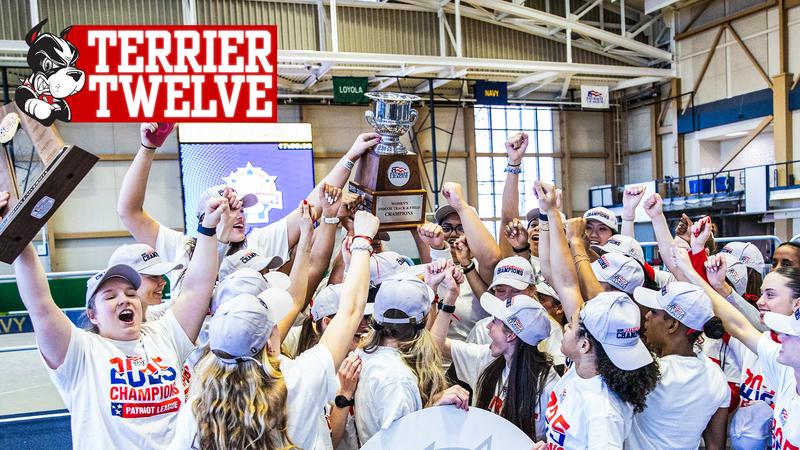
Returning for a 17th year, the Terrier Twelve recognizes the top achievements of Boston University teams and student-athletes from the previous year. Check back each Monday and Wednesday this summer as we unveil this year’s Terrier Twelve on GoTerriers.com.’
Claiming the top spot in this year’s Terrier Twelve is women’s track & field, which won its third Patriot League indoor title and was represented on the national stage in each of the NCAA cross country, indoor track & field and outdoor track & field championships by Vera Sjöberg.
BU had a historic season as the team set 10 school records, finished second or first in each of the three championships, claimed five major Patriot League awards, three Scholar-Athlete of the Year honors and two USTFCCCA regional awards.
Beginning in the cross country season, the Terriers finished as runners-up at the Patriot League Championships with 36 points, the best mark in program history. Sjöberg won the Patriot League title with a time of 19:45.9 and was joined on the First Team All-Patriot League by sophomore Ola Szulska (fifth place) and senior Daisy Liljegren (seventh place).
The Terriers then went to the NCAA Northeast Regionals and Sjöberg took seventh, earning her All-Northeast Region team honors and qualifying her for the NCAA Cross Country Championships in Madison, Wisconsin. The Terriers had their best team finish since 2008 as they picked up eighth place. At the national meet, Sjöberg earned 42nd place, just two spots out from an All-America honor. She was BU’s first representative at the meet since 2021 and the only Patriot League representative.
At the Patriot League Indoor Championships, the Terriers scored 166 points to win its first title since 2016, the second-most points scored indoors in program history. Director of Track & Field Grant Cartwright was named the Patriot League Coach of the Year while Sjöberg picked up Highest Point Scorer and Track Athlete of the Meet honors and junior Peace Omonzane took home Field Athlete of the Meet honors.
Sjöberg won the mile, 3000m and 5000m titles, becoming the first athlete in League history to win all three of those events in back-to-back years and. She set a meet record in the mile with a 4:40.71 time. Omonzane won both the long and triple jump and set a school and meet record in the long jump with a 6.20m leap.
Also taking home gold medals were junior Ellie Roan (weight throw) and freshman Olivia Hughes (pentathlon) as BU earned seven golds and 12 total medals, including a sweep of the triple jump podium.
Sjöberg, the Stockholm, Sweden native, continued on to run at her first NCAA Indoor Championships in Virgina Beach, Virginia and finished eighth in the mile, capturing First Team All-America status — BU’s first recipient of the award indoors since 2014.
At the Outdoor Championships, the Terriers earned a second-place finish, once again relying on Sjöberg (Track Athlete of the Meet) and Omonzane (Field Athlete of the Meet), who helped bring in five of the team’s six gold medals as BU finished with 167 points. BU finished with 30 medals total.
Omonzane continued her horizontal jumps dominance as she swept the long and triple jump gold medals again and set meet records in both events, including a school record in the long jump (6.44m). She became the first Patriot League athlete to win all four horizontal jumps gold medals since 2012. Sjöberg won three gold medals, taking crowns in the 1500m, 5000m and 4x800m. In all three of those events, she set meet records with times of 4:14.37, 16:11.40 and 8:39.22, respectively.
Roan once again won a gold medal, taking the crown in the hammer throw for the second straight year, and BU concluded with 17 total medals. Both horizontal jumps podiums were swept by the Terriers for the first time since BU joined the Patriot League in 2014.
Five student-athletes went on to compete at the NCAA East First Rounds in Jacksonville, Florida: Sjöberg (1500m, 5000m), Omonzane (long jump, triple jump), Roan (hammer throw), freshman Caroline Collins (1500m) and senior Asia Hamilton (long jump). From there, Sjöberg advanced to the NCAA Championships in the 1500m and the 5000m, marking the first time in program or Patriot League history that a woman would compete in two events at the same NCAA Outdoor Championships.
Against a stacked field and in front of a roaring crowd Eugene, Oregon, Sjöberg put on a historic performance as she finished second nationally in the 5000m — the best finish by a Patriot League or BU athlete ever at the NCAA Outdoor Championships — and earned First Team All-America honors. She also took 11th in the 1500m and was named a Second Team All-American.
Following the season, Sjöberg was named the USTFCCCA Northeast Region Track Athlete of the Year. At the 2025 Scarlet & White Awards, the now-graduate was named the recipient of the Mildred Barnes Award and BU’s Woman of the Year.
2024-25 Terrier Twelve
#2 – Men’s Ice Hockey Wins Beanpot, Advances to National Title Game
#3 – Women’s Ice Hockey Wins First Hockey East Title in Ten Years
#4 – Softball Overcomes Inexperience to Reach Third Straight NCAA Tournament
#5 – Women’s Soccer Secures 2025 Patriot League Championship
#6 – Women’s Tennis Claims 29th Conference Title
#7 – Women’s Rowing Repeats as Patriot League Champions
#8 – Lightweight Rowing Fills Trophy Case in Historic Spring Slate
#9 – Men’s Track & Field and Cross Country Stays Consistent Near Top of PL
#10 – Terriers Set GPA Records
#11 – Men’s Soccer Repeats as PL Regular Season Champions
#12 – Men’s Lacrosse Advances to PL Title Game for Second Straight Season
Sports
Colorado State Volleyball Picked to Finish Second Ahead of Final Season in Mountain West
FORT COLLINS – The Mountain West announced the 2025 women’s volleyball predicted order of finish as well as individual awards today, as voted on by the league’s 12 head coaches with Colorado State predicted to finish second with 106 points. Utah State was tabbed the pre-season favorite earning 114 points and seven first-place votes. Colorado State […]

Utah State was tabbed the pre-season favorite earning 114 points and seven first-place votes. Colorado State has been tabbed the runner-up with 106 points followed by San Diego State in third with 96 points and the final two first-place votes. In fourth is Fresno State (86 points) and predicted to finish fifth is Boise State (73). UNLV and Wyoming are tied to finish sixth with 72 points each. In eighth is the league’s newest member, Grand Canyon (61), followed by New Mexico (37), Nevada (32), San José State (31) and Air Force (12).
With the Rams returning only one of their starters from last season’s championship run, they do not boast anyone on the MW Preseason team, but are sill favored in the coaches poll as only one of two teams to total over 100 points, including three first-place votes.
The Rams key match ups this season include facing off against Utah State in Moby Arena October 11th while their match up with the Aggies in Logan, Utah is set for November 6th. The Rams will only play the Aztecs once this conference season, on the road in San Diego, Calif. November 13th. Similarly, Colorado State will only face Fresno State once during the regular season on October 30th in Moby Arena.
Full 2025 Volleyball Schedule | 2025 Volleyball Season Tickets
2025 MW PRESEASON TEAM
Bre Mitchell Sr. L Boise State
Addison Haluska Sr. OPP Fresno State
Taylor Underwood Sr. OPP San Diego State
Basia Latos So. OH UNLV
Tierney Barlow Sr. MB Utah State
Kaylie Kofe So. S Utah State
Paige Lauterwasser Jr. OH Wyoming
2025 MW PRESEASON POLL (1st Place Votes)
1. Utah State (7) 114
2. Colorado State (3) 106
3. San Diego State (2) 96
4. Fresno State 86
5. Boise State 73
T6. UNLV 72
T6. Wyoming 72
8. Grand Canyon 61
9. New Mexico 37
10. Nevada 32
11. San José State 31
12. Air Force 12
Sports
Blazers Open 2025 Season at Home Against UCF
BIRMINGHAM – UAB women’s soccer will begin the 2025 campaign on Thursday night as the Blazers host UCF at PNC Field. Kickoff is set for 7 p.m. CT and will air live on ESPN+. The marketing promotion includes a back to school drive where fans can bring school supplies to be able to purchase a discounted […]

The marketing promotion includes a back to school drive where fans can bring school supplies to be able to purchase a discounted ticket.
SERIES HISTORY
UCF leads the all-time series 7-3-1. The last meeting took place in Birmingham, Alabama on September 23, 2012, with the Knights earning a 6-0 win.
NEW FACES
UAB brought in 11 new players for the 2025 season from the high school level and via the transfer portal.
RETURNING PRODUCTION
The Blazers top three goal scores from last season have all returned. Abbey Burns who led the team with seven goals, Jette Zimmer scored four and Sydney Bolinger who had two. Other players that are back on this year’s squad that scored one goal are Maia Sirota, Mia Leath, Lola Sommer and Abby Graeser. In total, UAB has 16 letterwinners returning for the season.
SCOUTING THE KNIGHTS
UCF had a 3-6-6 overall record last season. The Knights have six starters from last year’s squad as well as 13 letterwinners. UCF welcomes 12 newcomers, with eight transfers and four freshmen.
SINGLE GAME TICKETS
Single game tickets for all UAB Women’s Soccer home matches are available here.
2025-26 GOLD CARD
The 2025-26 Gold Card is on sale. The 2025-26 Gold Card will get you access to all home events for Women’s Soccer, Men’s Soccer, Volleyball, Women’s Basketball, Softball, and Baseball (Regions Field & Young Memorial). This card is not valid for American Conference or NCAA Championship events.
YOUR SUPPORT FUELS SUCCESS!
With your help, Blazer Student-Athletes are given the resources, tools, and opportunities they need to achieve greatness. Every contribution you make directly supports our teams, ensuring they excel not only on the field but in the classroom as well. We invite you to renew your support to UAB Athletics today and for more information on ways to show your generosity through the Blazer Scholarship Fund, capital initiatives, and sport specific giving go to blazerboosters.com or call us at (205) 996-9969.
FOLLOW THE BLAZERS
For more information on the UAB women’s soccer team, follow @UAB_WSOC on X and Instagram.
Sports
Men’s Water Polo Hires James Wolff as New Assistant Coach
UC Santa Barbara Men’s Water Polo has appointed James Wolff as its new assistant coach for the upcoming season. With 15 years of coaching experience and 18 years officiating water polo, Wolff has played a significant role in developing the sport on the East Coast. He expressed his excitement to contribute to Santa Barbara’s rich […]
UC Santa Barbara Men’s Water Polo has appointed James Wolff as its new assistant coach for the upcoming season. With 15 years of coaching experience and 18 years officiating water polo, Wolff has played a significant role in developing the sport on the East Coast. He expressed his excitement to contribute to Santa Barbara’s rich water polo legacy. Wolff previously served as head coach at LaSalle, where he guided notable players to honors while maintaining academic excellence.
By the Numbers
- 15 years of coaching experience.
- 18 years of officiating experience in water polo.
- Led LaSalle to the best team GPA in Division I during his first season.
State of Play
- Wolff takes over an UC Santa Barbara team coming off a 15-12 season.
- The team reached the Big West Championship, falling to Long Beach State.
What’s Next
Wolff aims to harness his extensive experience to elevate the team’s performance and develop future talent, potentially leading to more competitive seasons in both conference play and national tournaments.
Bottom Line
Wolff’s hiring signals a strategic move for UC Santa Barbara to strengthen its coaching staff and enhance its competitive edge in collegiate water polo.
Sports
Hastings College Athletic Hall of Fame to celebrate 36th class
Eight individuals and two teams will celebrate their induction as the 36th class to join the Hastings College Athletic Hall of Fame during a reception and banquet held in conjunction with Hastings College Homecoming on Saturday, September 27. The celebration begins with a social hour at 5:00 p.m. in Kiewit Gymnasium (715 E. 7th Street, […]

Eight individuals and two teams will celebrate their induction as the 36th class to join the Hastings College Athletic Hall of Fame during a reception and banquet held in conjunction with Hastings College Homecoming on Saturday, September 27.
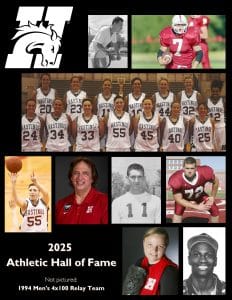
 The celebration begins with a social hour at 5:00 p.m. in Kiewit Gymnasium (715 E. 7th Street, Hastings) on campus, followed by a banquet at 5:30 p.m. Tickets are $50 for adults, $20 for children ages 4-12 and free for children ages 3 and under. Tickets may be purchased online at hastings.edu/homecoming, or by contacting the Hastings College alumni office at 402.461.7363 or alumni@hastings.edu.
The celebration begins with a social hour at 5:00 p.m. in Kiewit Gymnasium (715 E. 7th Street, Hastings) on campus, followed by a banquet at 5:30 p.m. Tickets are $50 for adults, $20 for children ages 4-12 and free for children ages 3 and under. Tickets may be purchased online at hastings.edu/homecoming, or by contacting the Hastings College alumni office at 402.461.7363 or alumni@hastings.edu.
The Athletic Hall of Fame was established in 1989 to honor and preserve the memory of athletes, teams, coaches and those who have contributed meritorious service to Hastings College and its athletic programs.
The 2025 Hastings College Athletic Hall of Fame class includes:
- Lloyd Smith ‘52 of Manitou Springs, Colorado, (posthumously) for tennis
- Weboon Peboontom ‘70 of Woodridge, Illinois, for tennis
- Ron Hergott ‘82 of Ayr, Nebraska, for coaching
- Allen Haynes ‘96 of Laveen, Arizona, for track and field
- Kory Bumgardner ‘97 of Hastings, Nebraska, for football
- Chelsey (Woodside) Jacobitz ‘10/MAT ‘13 of Holstein, Nebraska, for softball
- Alicia (Statler) Templin ‘12 of Bruning, Nebraska, for women’s basketball
- Tom Van Haute ‘13/MAT ‘15 of Gretna, Nebraska, for football
- 1994 Men’s 4×100 Meter Relay Team, which finished as conference champions and runner up in the NAIA Outdoor National Championships
- 2008-09 Women’s Basketball Team, which finished as the NAIA Division II national runner up
Previous Hastings College Athletic Hall of Fame recipients can be found at hastings.edu/halloffame.
Biographies of the 2025 Inductees
The late Lloyd Smith was a force to be reckoned with on the tennis court. The four-year letterwinner captured two individual conference titles and was a member of three consecutive Nebraska College Conference (NCC) team championships. Smith passed away in 2019 at the age of 90.
Weboon Peboontom won two individual Nebraska College Conference (NCC) titles in tennis during his junior and senior seasons and was a member of the runner up NCC team in 1967.
Ron Hergott coached many All-Americans and All-Conference performers during his 20-plus years coaching track and field, football, women’s basketball and bowling at Hastings College. He started and built a national powerhouse bowling program and coached the only individual to win back-to-back national titles in bowling (Emily Eckhoff).
Allen Haynes ranks third all-time in the 100-meter outdoor event and fourth all-time in the 200-meter outdoor event and is a member of the school record-setting 4×100-meter relay team. Haynes placed fourth in the outdoor and indoor events in 1995 and was a three-time All-American in the 60-meter indoor, 100-meter outdoor and 400-meter outdoor events.
Kory Bumgardner began his collegiate football career at running back before moving to I-back in his senior season. He was a two-time First Team All-Conference selection in 1995 and 1996. He currently ranks fifth in career rushing yards with 3,018 – accumulating 1,063 of those yards during his senior season and is also fifth in career touchdowns with 26.
Chelsey (Woodside) Jacobitz was an Honorable Mention All-Conference selection in 2008, a First Team All-Conference selection in 2009 and a Second Team All-Conference selection in 2010. As of 2025, the southpaw pitcher ranks first in career ERA’s with a 2.52 average, first in season strikeouts with 175 and second in season ERA’s with a 1.32 average.
Alicia (Statler) Templin was a two-time First Team All-GPAC selection for women’s basketball (2010 and 2011) and a Second Team All-American in 2011. As of 2025, she is the Broncos’ eighth all-time leading scorer, third all-time leading rebounder, first in career and season field goal percentages and the all-time leader in career blocks.
Tom Van Haute anchored the offensive line of the Bronco football team, starting as a right guard just four games into his freshman season before moving to left tackle midway through his sophomore season. He was what then-head coach Paul Mierkiewicz quoted as a mainstay on the offensive line armed with an unbelievable personality. He was a First Team All-American in 2011, was twice named a First Team All-Conference selection (2010 and 2011), and was Second Team All-Conference in 2009.
The 1994 Men’s 4×100 Relay Team won the Conference Championship in their event and holds the Hastings College record to this day. The team, composed of Allen Haynes ‘96, Josh Kitchen ‘97, Keith Salyers ‘96 and Craig Taylor ‘99, finished second in the NAIA Outdoor National Championships at Azusa Pacific. The team was coached by Bart Gray.
The 2008-09 Women’s Basketball Team finished as NAIA Division II national runners up in Sioux City, Iowa, falling to eventual champion Morningside by a narrow 68-63 margin. The Broncos’ Lindsay Ducey ‘10 was named to the All-Tournament First Team, while teammate Kim Faimon ‘10 was named to the All-Tournament Second Team and received the hustle award. Members of the team included Becky (Tesch) Amdahl ‘12, Rachel (Isherwood) Barry ‘10, Breanna Becker ‘11, Brittany (Hoins) Brockman ‘11, Sarah Cambridge ‘09, Kay (Broekemeier) Dent ‘09, Ducey, Faimon, Jennifer Gold ‘12, Alyssa (Farmer) Heine ‘11, Sophia McDermott ‘12, Heather McKeon ‘10, Justine (Dethlefs) Mertens ‘12, Tenaya (Howsden) Nuttelman ‘12, Lee Ann (Jameson) Roepke ‘12, Elyse (Schlake) Lukassen ‘10, Alicia (Statler) Templin ‘12, Elizabeth (Lipker) Volker ‘12, Chelsie (Wardyn) Watson ‘12, Amber (Kulus) Woitaszewski ‘09 and Jaime (Blevins) Wright ‘12. The team was coached by Jeff Dittman and assisted by Summer (Wright) Anesin and grad assistant Jessica VanLoy.
Hastings College is a four-year residential college that focuses on student academic and extracurricular achievement. Discover more at hastings.edu.
-

 Technology2 weeks ago
Technology2 weeks agoAlly Runs New Game Plan in WNBA All-Star Rookie Debut
-

 Health2 weeks ago
Health2 weeks agoThe Women Driving A New Era In U.S. Ski & Snowboard
-

 High School Sports3 weeks ago
High School Sports3 weeks ago100 days to men's college basketball
-

 NIL2 weeks ago
NIL2 weeks agoESPN Announces 'dont wait run fast' by mgk as New College Football Anthem for 2025
-

 College Sports3 weeks ago
College Sports3 weeks agoCity rows to sporting destination goal on boats of new complexes & old strengths
-

 Sports3 weeks ago
Sports3 weeks agoNtekpere honored as Second Team Academic All-American | APG State News
-

 Rec Sports1 week ago
Rec Sports1 week agoSwimming & Diving Comments on the Rules – 2025-26
-

 Health3 weeks ago
Health3 weeks agoTrump administration investigates Oregon's transgender athlete policies
-

 Technology1 week ago
Technology1 week agoAmid Sports Chaos, ‘Known’ Data and Outcomes Help Agency Win
-

 Sports3 weeks ago
Sports3 weeks agoMore State Schools of the Year














